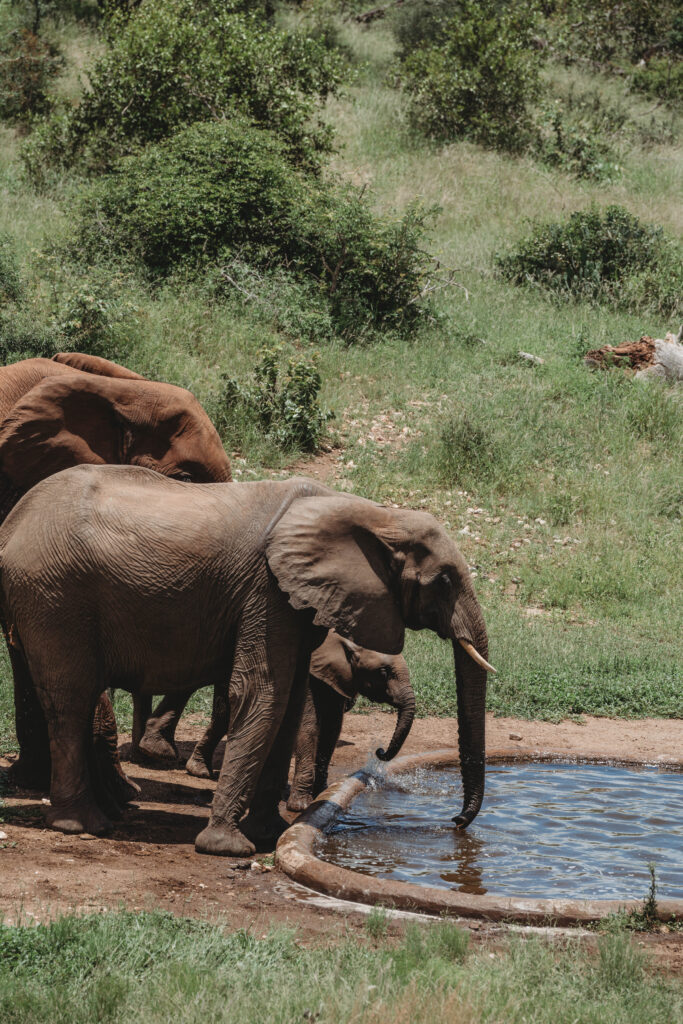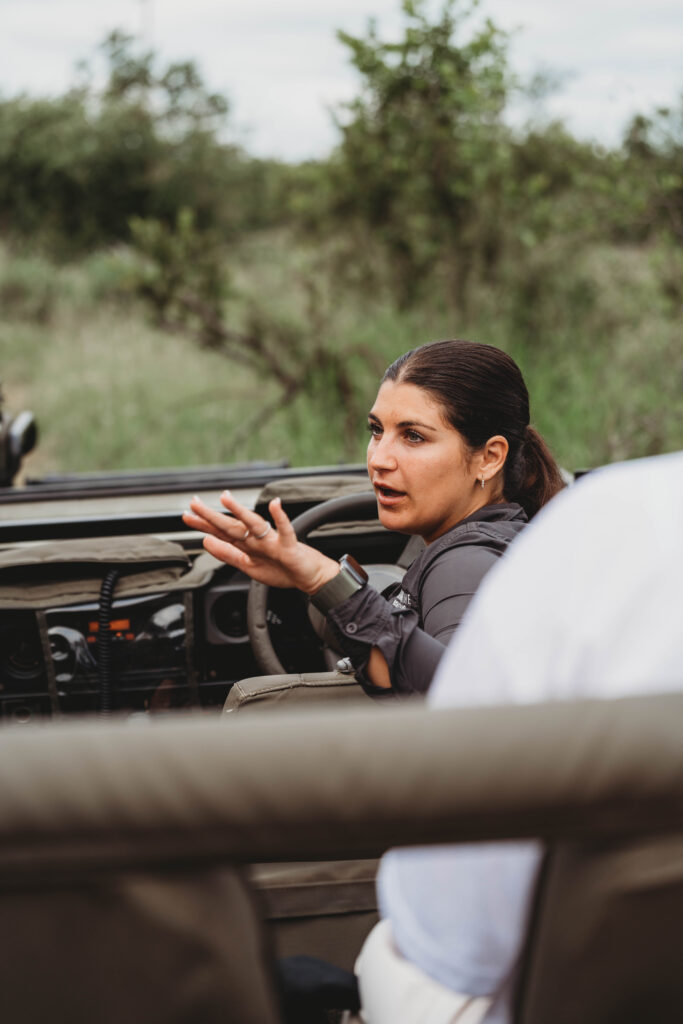
Are you planning your first trip to South Africa and thinking: “What should I pack for an African safari?” You are in the right place It’s not a surprise you want to be completely prepared for this once in a lifetime adventure. So I have done the honors of compiling my list of necessary (and optional) things to bring with you on a safari, as well as some other things to consider when planning this epic adventure. If you need help with planning other elements, take a look at my South African safari blog post here.
Weather
While there are a few different countries in east and southern Africa that offer the safari experience, my personal experience is with South Africa. So let’s look at the weather and best season for visiting a safari in this beautiful country.

Winter
The best time to visit a safari in South Africa is during the winter season. Remember this is in the southern hemisphere, so the winter typically spans from June to August, though the dry season generally spans from May-September.
During this time the temperature is generally cooler, and the weather around Kruger National Park is mild and dry, with minimal rainfall, which makes it the perfect time for wildlife viewing as animals such as lions and elephants can be found gathered around water sources. While daytime temperatures are still somewhat warm, ranging from 15°C to 25°C (59°F to 77°F), expect the nights to be cooler.
While the area around the park is dry, the area around Cape Town will be cool and wet, from 7°C to 18°C (45°F to 64°F). So, don’t expect to be able to relax on the beach during this time. Instead, July and August initiate the whale-watching season. So you can get the land and sea wildlife experience!
Because of the different weather conditions across the country, it’s important to bring clothes for layering when packing for winter. Here’s a comprehensive list of items to consider:


What to pack for a safari in South Africa in winter:
- Insulated, waterproof jacket
- Fleece or insulated layers for warmth
- Base layers
- Wool or synthetic blend socks for warmth
- Warm pants (jeans or insulated trousers)
- Long-sleeved shirts and sweaters
- Scarves, gloves, and hats to protect against cold winds
- Waterproof and insulated boots or shoes for walking and safaris
- Safari-appropriate clothing with neutral colors for game drives (khaki, olive green, tan) to blend in with the environment
Winter is the best season for those whose sole mission is to enjoy seeing wildlife. If you want to relax on the beach as well as going on a safari, it might not be the best time. Though you still might get the option of swimming in the pool if you choose the right camp.
Summer
In South Africa, summer weather typically spans from December to February. As in winter, the weather during varies depending on the region, but generally, you can expect warm to hot temperatures.
If in addition to the safari, you really want to explore the urban vibe of Cape Town and relax on the gorgeous beaches of the Western Cape, summer is the better season for you. Temperatures range from 20°C-30°C (68°F to 86°F), though there are occasional heatwaves, particularly in January and February. It’s important to know, though, that because of this gorgeous weather, the area will be very busy in this season.
It’s also important to note that the conditions in the safari park might be extreme – both with very hot weather and torrential rains and storms. The average temperature is around 32°C or 90°F, though temperatures often reach over 40°C, or 104°F, and the air is quite humid as well, especially after rainfall.
Because of the high amounts of rain, the foliage is lush and green. While this can make it more difficult for wildlife sightings, it makes it the prime season for bird watching. It’s also a good for plant lovers, as the green vegetation will inspire you.
When packing, it’s important to consider the extreme weather you might face in South Africa during the summer. Here are my recommendations for what to bring.
What to pack for a safari in South Africa in summer:
- Lightweight, breathable clothing, particularly long-sleeved shirts and pants to protect against sunburn and insect bites. Breathable and water-wicking materials like cotton and linen are best for this weather.
- Shorts and T-shirts for warmer days
- Swimsuit (if your accommodations have a pool or if there are opportunities for swimming)Light rain jacket or poncho
- Comfortable walking shoes or hiking boots – would be best if they were waterproof for the summer season.
- Sandals or flip-flops for lounging at camp
- Socks (moisture-wicking socks are ideal for long walks)
- Safari-appropriate clothing with neutral colors for game drives (khaki, olive green, tan) to blend in with the environment
- Long-sleeved breathable pajamas to protect from mosquitos – though it may just be too hot to sleep comfortably, so bring a short-sleeved option as well.
As long as you’re not afraid of the heat, the sunshine and warmth make it an excellent time for outdoor activities and wildlife viewing, especially birds. However, it’s essential to stay hydrated, wear sunscreen, and be prepared for occasional thunderstorms.

Spring and Fall
Winter and summer are not the only options, of course. Spring and fall are great options as well. Spring is known to be prime whale watching season, as well as having the possibility to spot wildflower meadows and baby animals. Fall has excellent weather, and as vegetation is decreasing, wildlife viewing opportunities will improve.
What to pack for a safari in South Africa in all seasons:
Aside from clothing, here are some additional things to pack for your safari trip:
Accessories
- Binoculars for wildlife viewing
- Camera with extra batteries and memory cards
- South Africa Power Outlet Adapter (and transformer if required based on voltage differences)
- Power bank for charging electronics
- Lightweight backpack or daypack for excursions
- Sunglasses with UV protection (even in winter, the sun can be intense)
- Sunscreen and lip balm with SPF
- Insect repellent with DEET
- Hat with a wide brim to shield from the sun – make sure it protects your face and the back of your neck, and that body heat is able to escape
- Waterproof bags or pouches for protecting electronics and valuables during water activities or rainy conditions

Health and Safety
- Prescription medications (carry extra in case of unexpected delays)
- First aid kit (bandages, antiseptic wipes, pain relievers, antihistamines, anti-diarrhea medicine, dramamine, rehydration salts, etc.)
- Personal toiletries and hygiene products
- Personal identification and travel documents (passport, visa, Yellow Fever Certificate, travel insurance, emergency contact information)
- Copy of your medical and travel insurance information
- Anti-malarial preventatives – There are multiple options. Talk to your doctor, or a specialized travel doctor for their recommendations. (Also look into what vaccines are recommended or required before traveling.)
Miscellaneous
- Flashlight or headlamp with extra batteries
- Travel pillow and sleep mask for long journeys or flights
- Snacks and energy bars for on-the-go sustenance
- Multi-tool or Swiss Army knife (check airline regulations for restrictions)
Optional
- Binocular harness or strap for easier carrying during walks and drives
- Collapsible walking stick for stability during hikes or bush walks
Elopement Specific
- As I am an elopement photographer, I wanted to additionally mention that it is important to pack your dress as your carryon for flights. You don’t want all that money to go to waste if your luggage gets lost.
Remember to pack light and efficiently, as luggage space may be limited. Additionally, check with your tour operator or accommodations for any specific recommendations or requirements based on your safari itinerary.

No matter the season, being prepared will make your adventure comfortable and enjoyable. Remember to pack smart, think about the weather, and bring those essential items. Now you’re all set to explore the wild and have the trip of a lifetime. Safe travels and happy safari-ing!
Be the first to comment